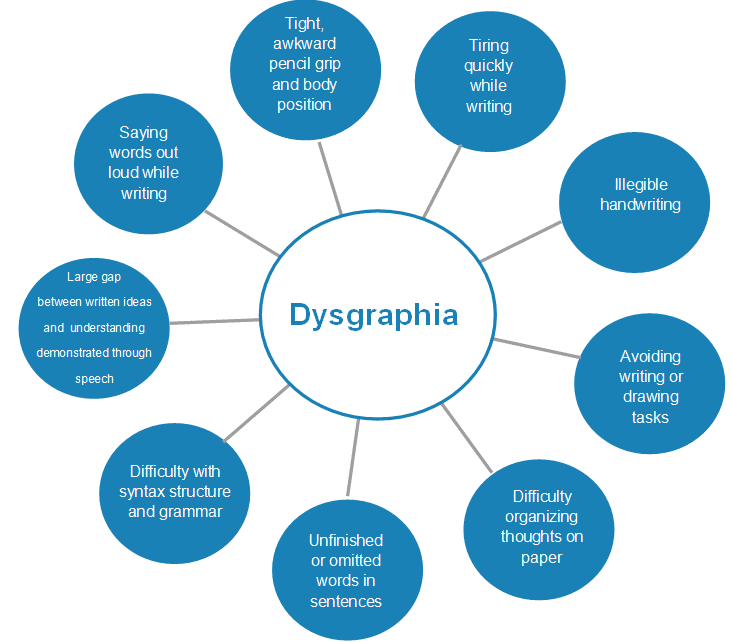DYSGRAPHIA

Dysgraphia is a learning disability that affects writing abilities. It can manifest itself as difficulties with spelling, poor handwriting and trouble putting thoughts on paper. Because writing requires a complex set of motor and information processing skills, saying a student has dysgraphia is not sufficient. A student with disorders in written expression will benefit from specific accommodations in the learning environment, as well as additional practice learning the skills required to be an accomplished writer.
What are the warning signs of dysgraphia?
Just having bad handwriting doesn’t mean a person has dysgraphia. Since dysgraphia is a processing disorder, difficulties can change throughout a lifetime. However, since writing is a developmental process, children learn the motor skills needed to write while learning the thinking skills needed to communicate on paper. Difficulties can also overlap.
If a person has trouble in any of the areas below, additional help may be beneficial.

